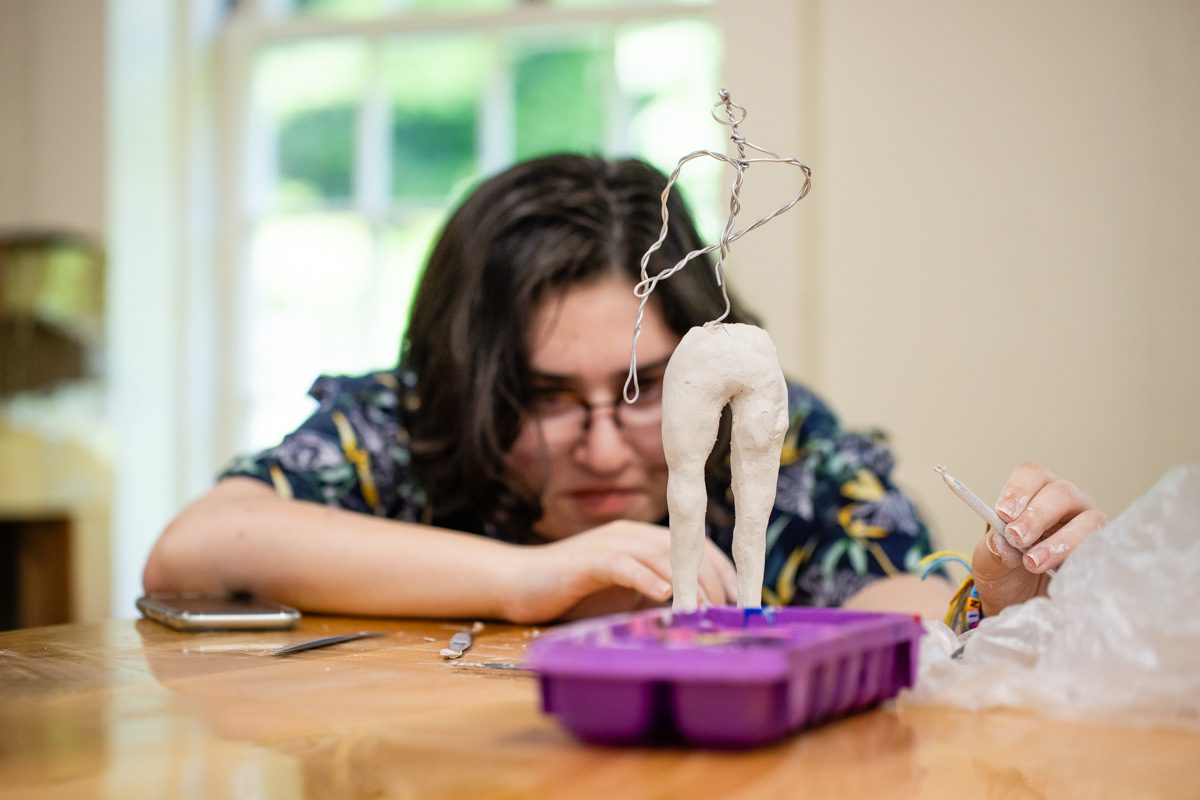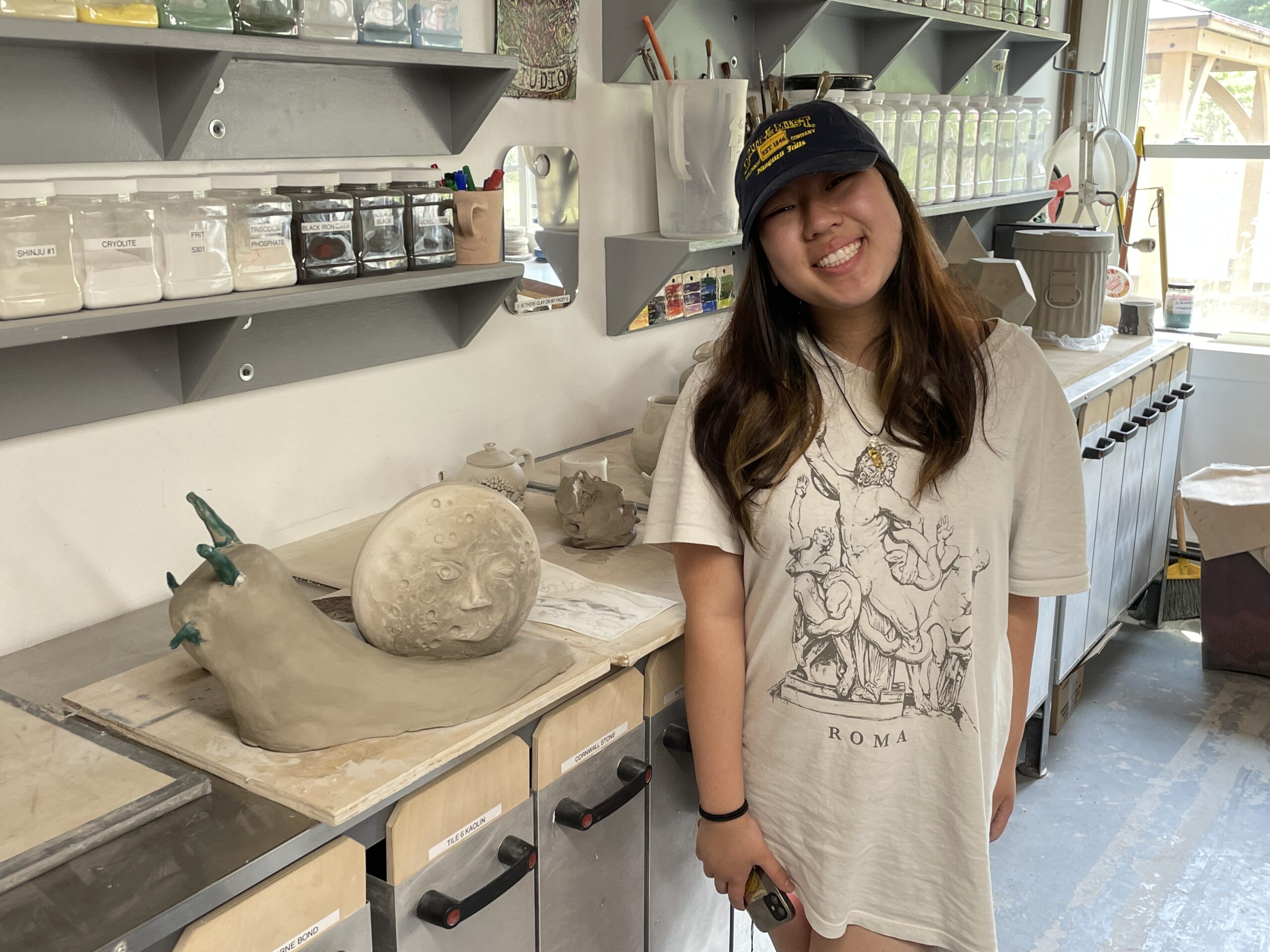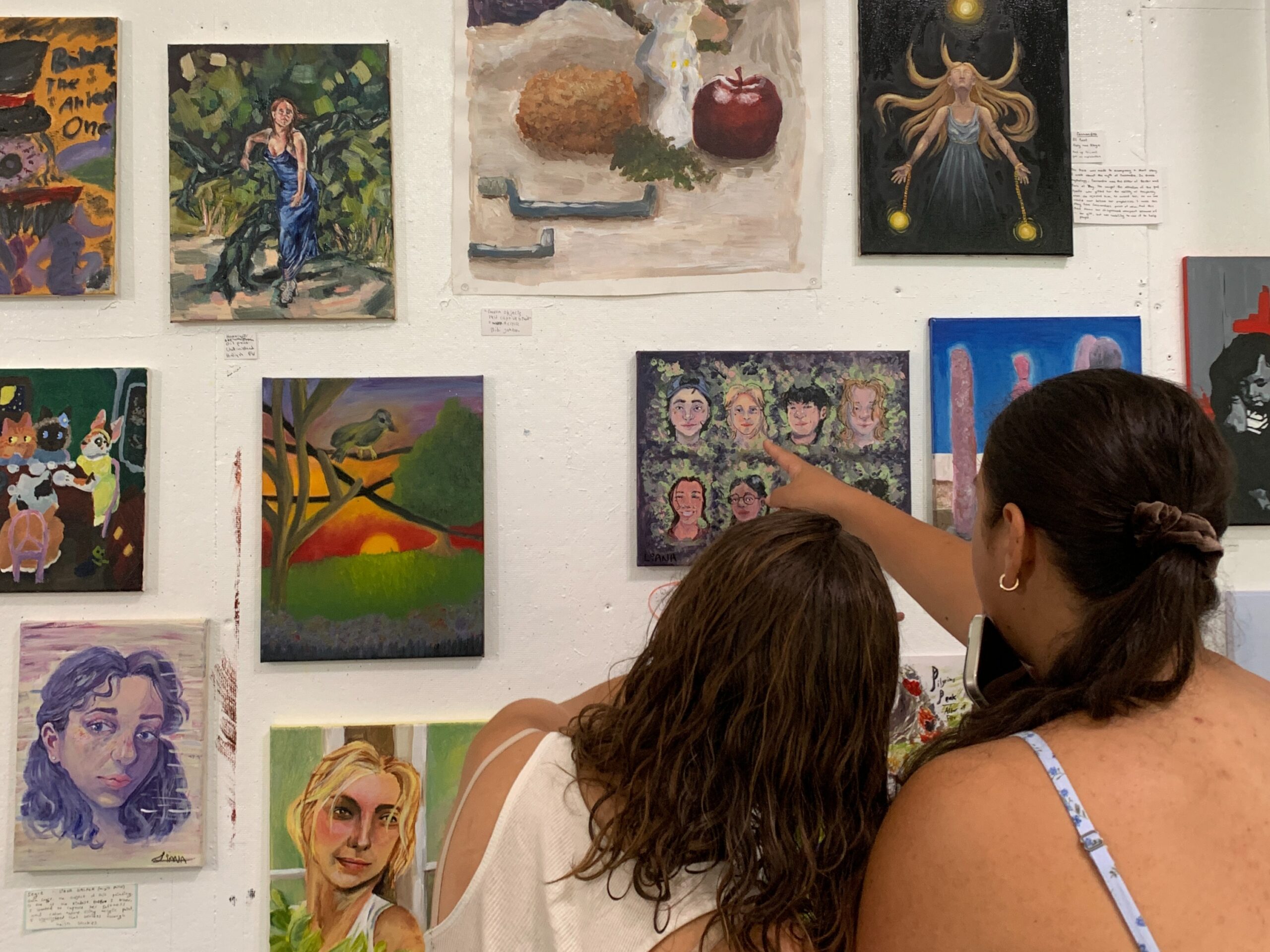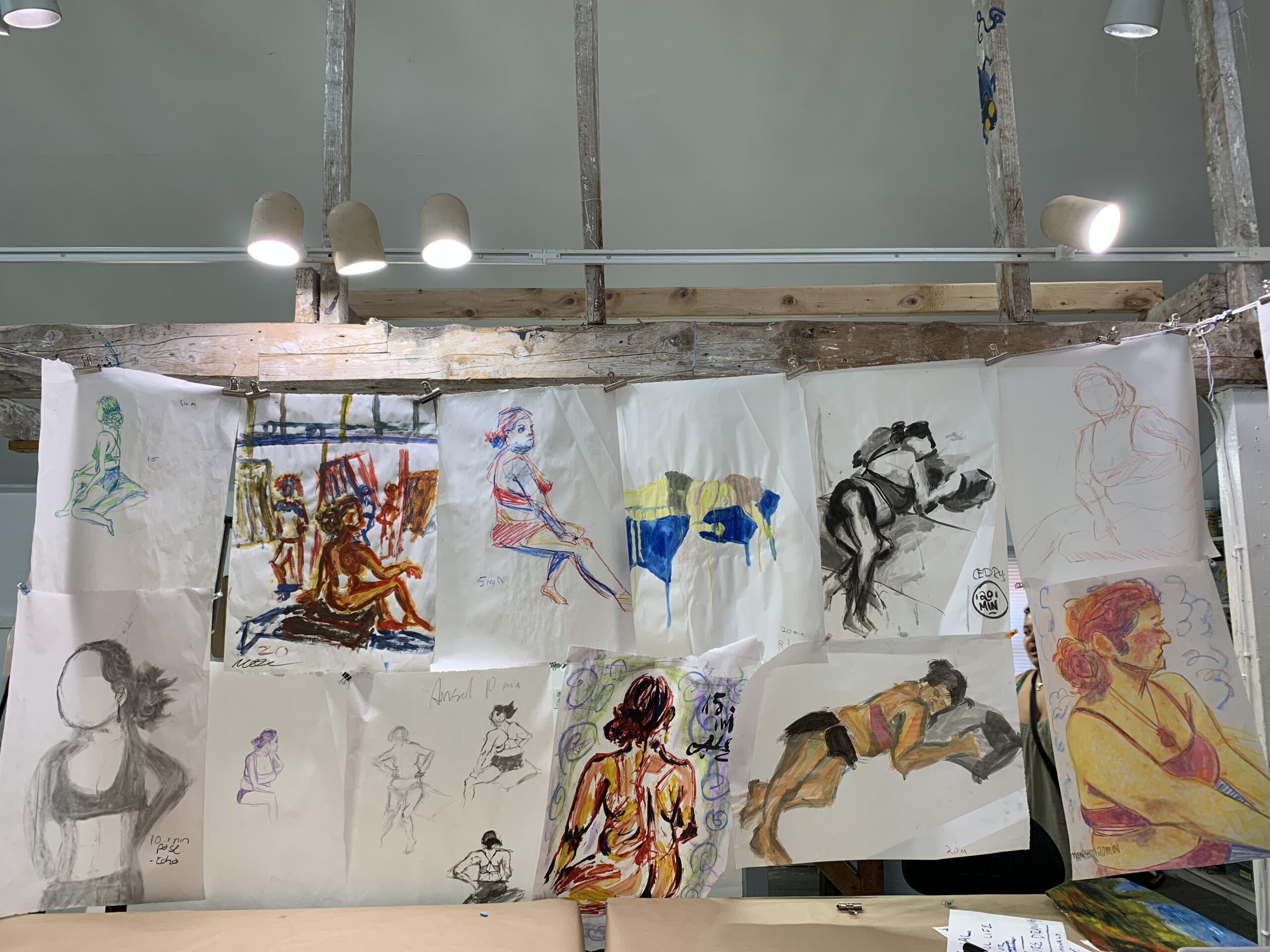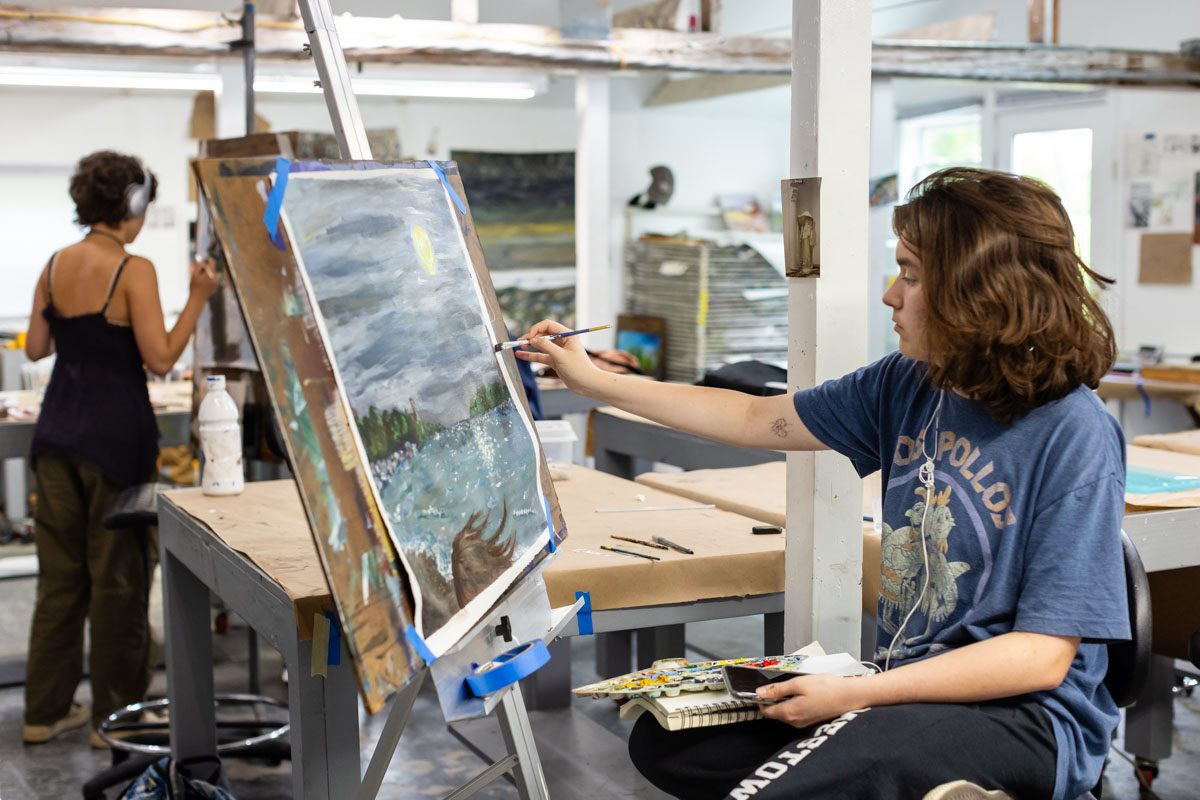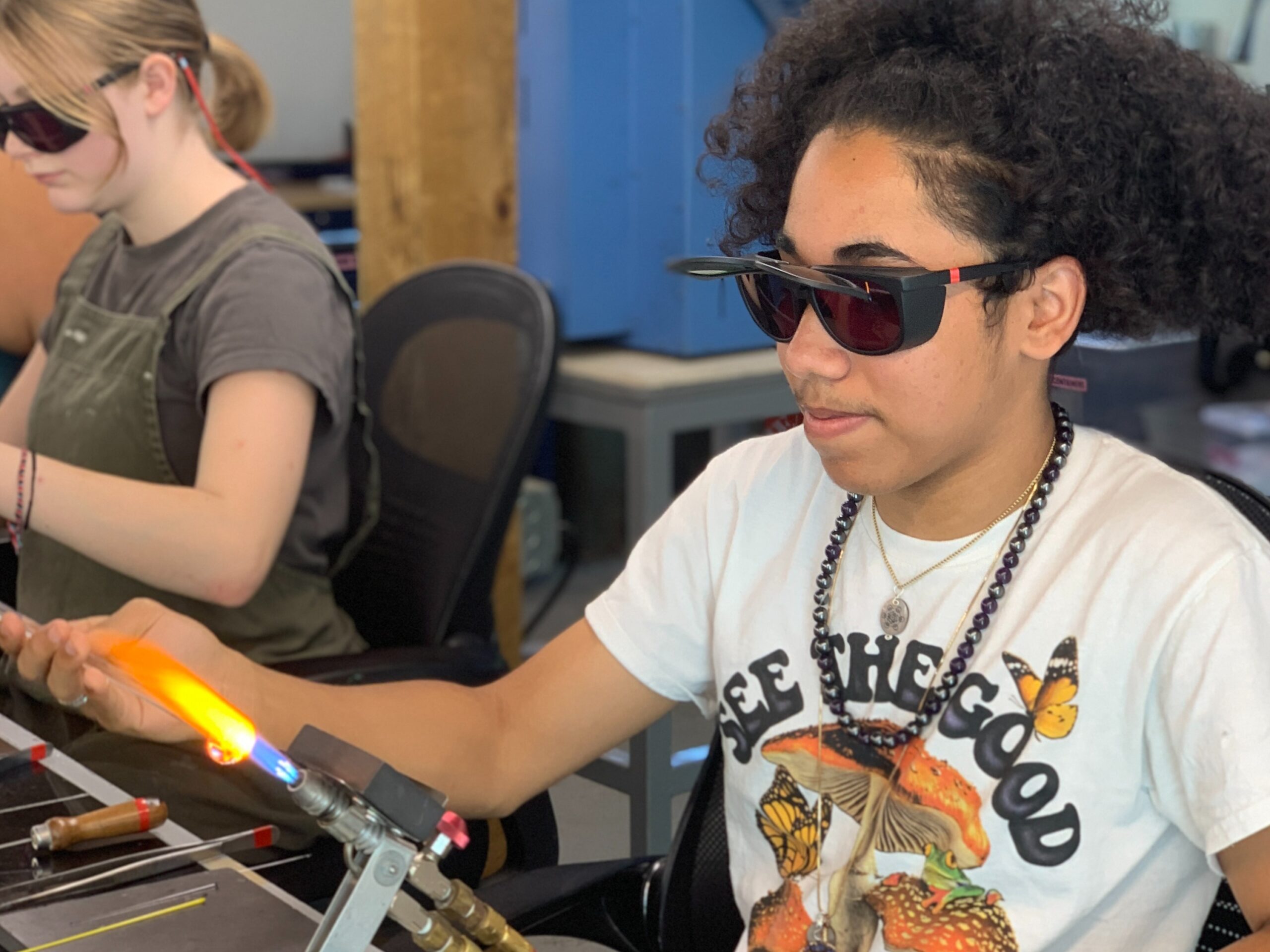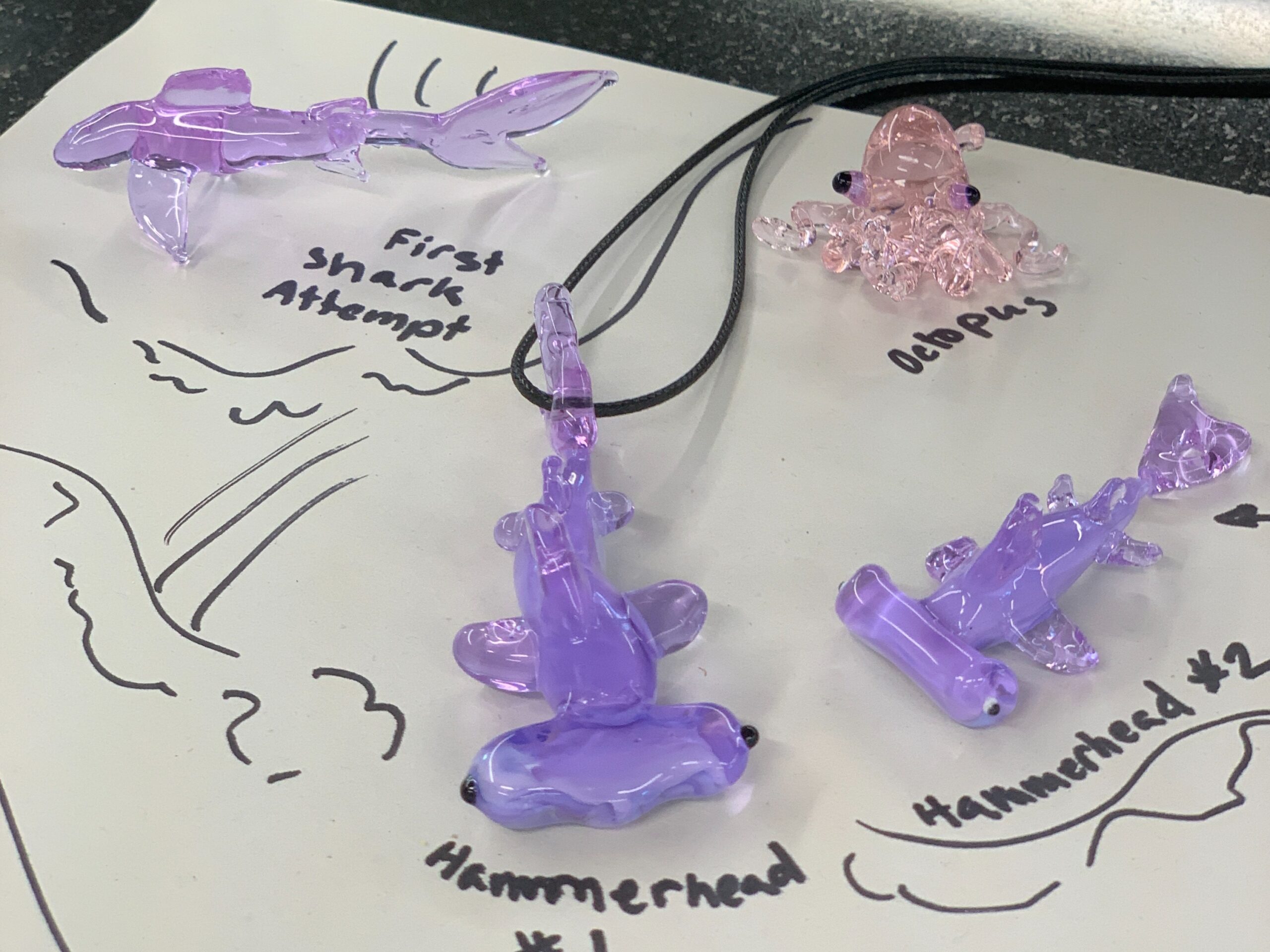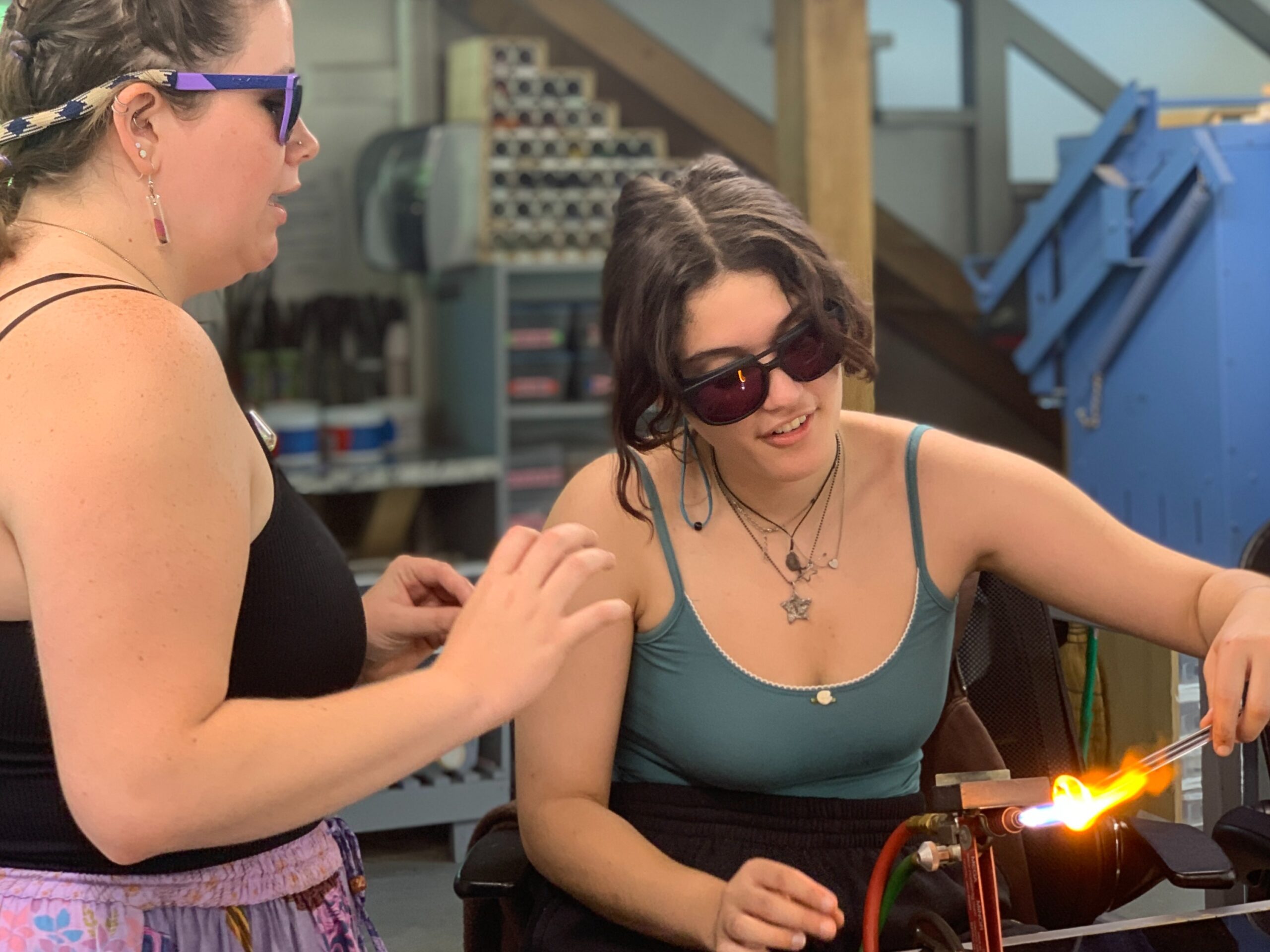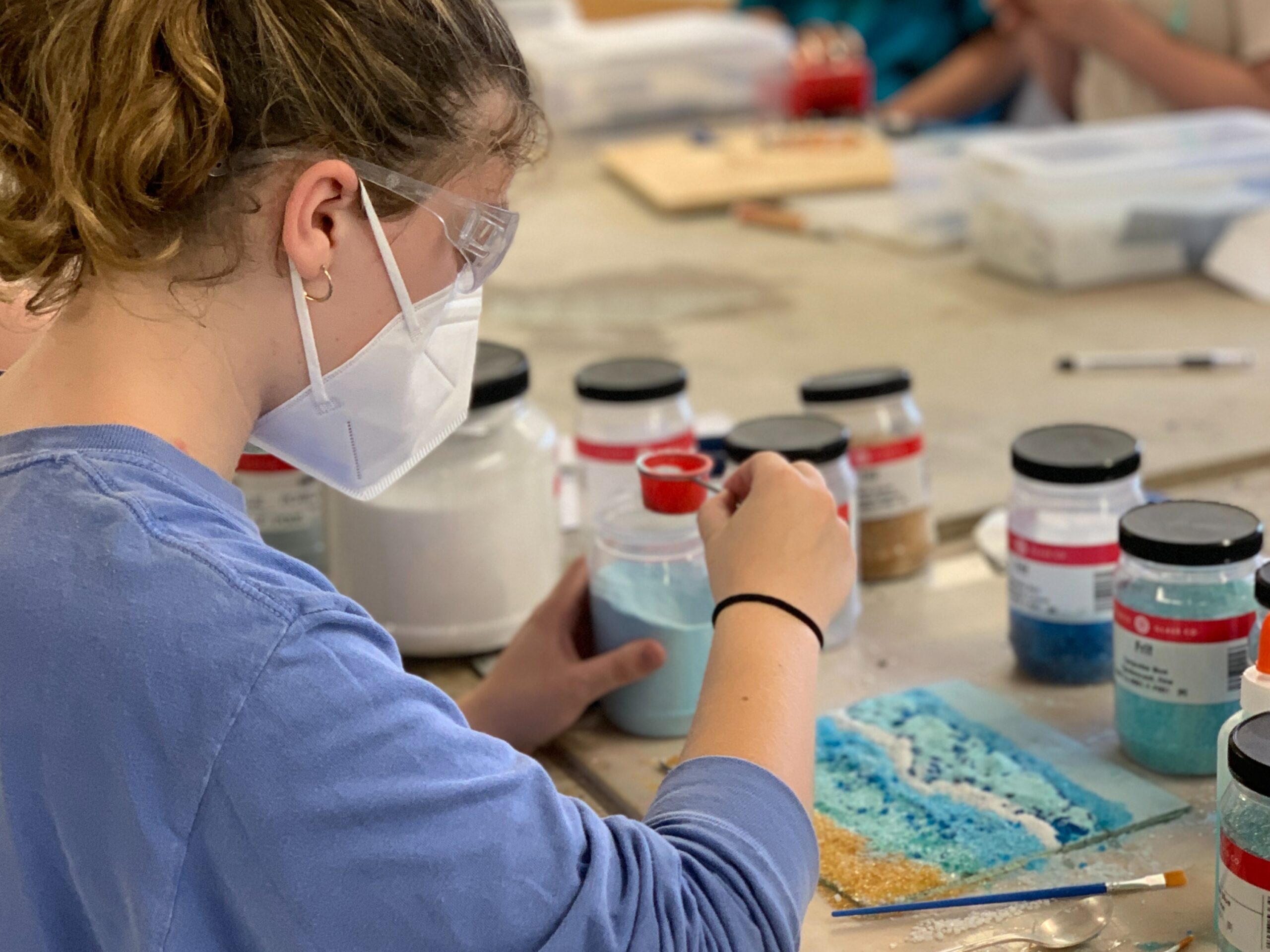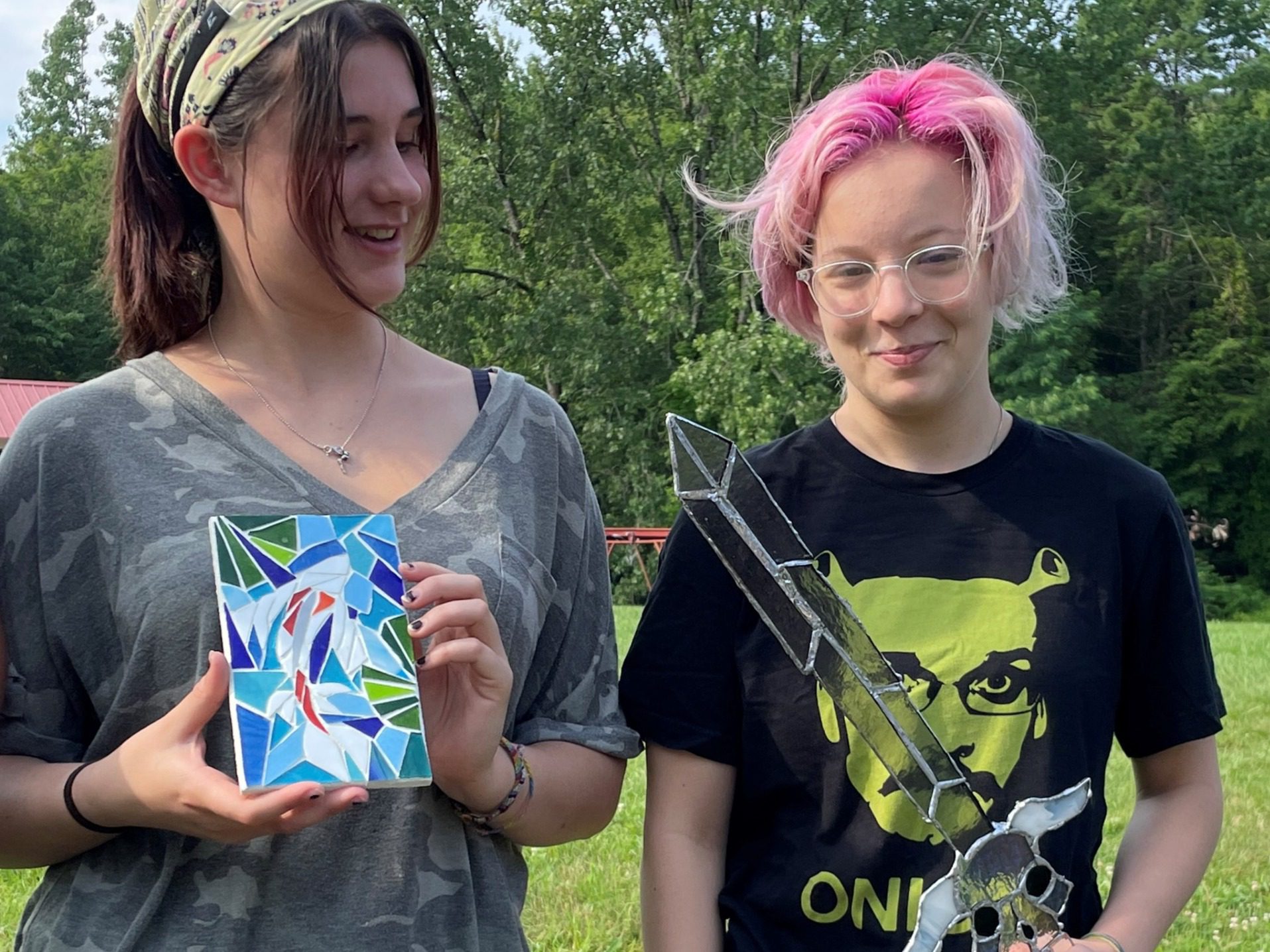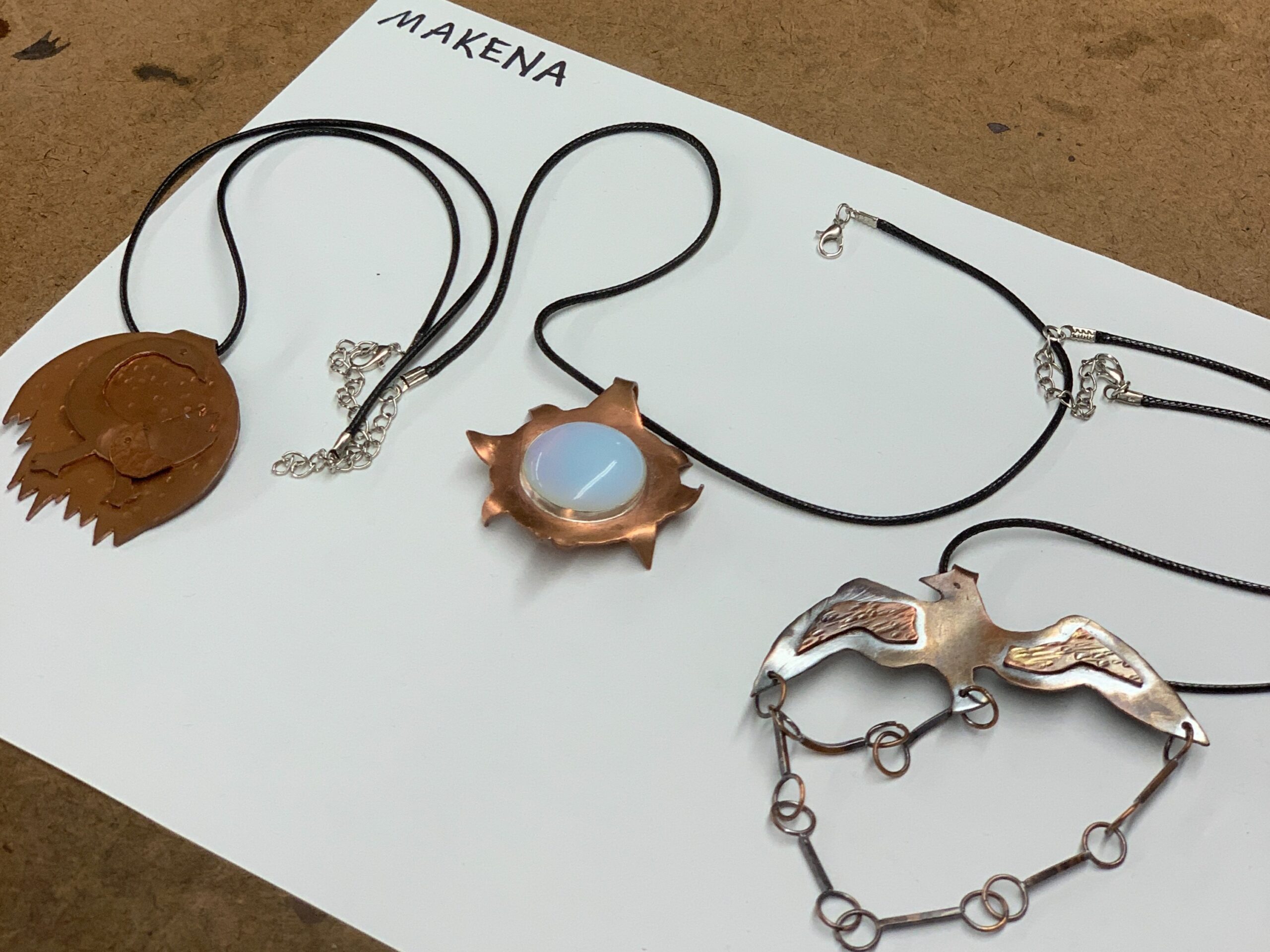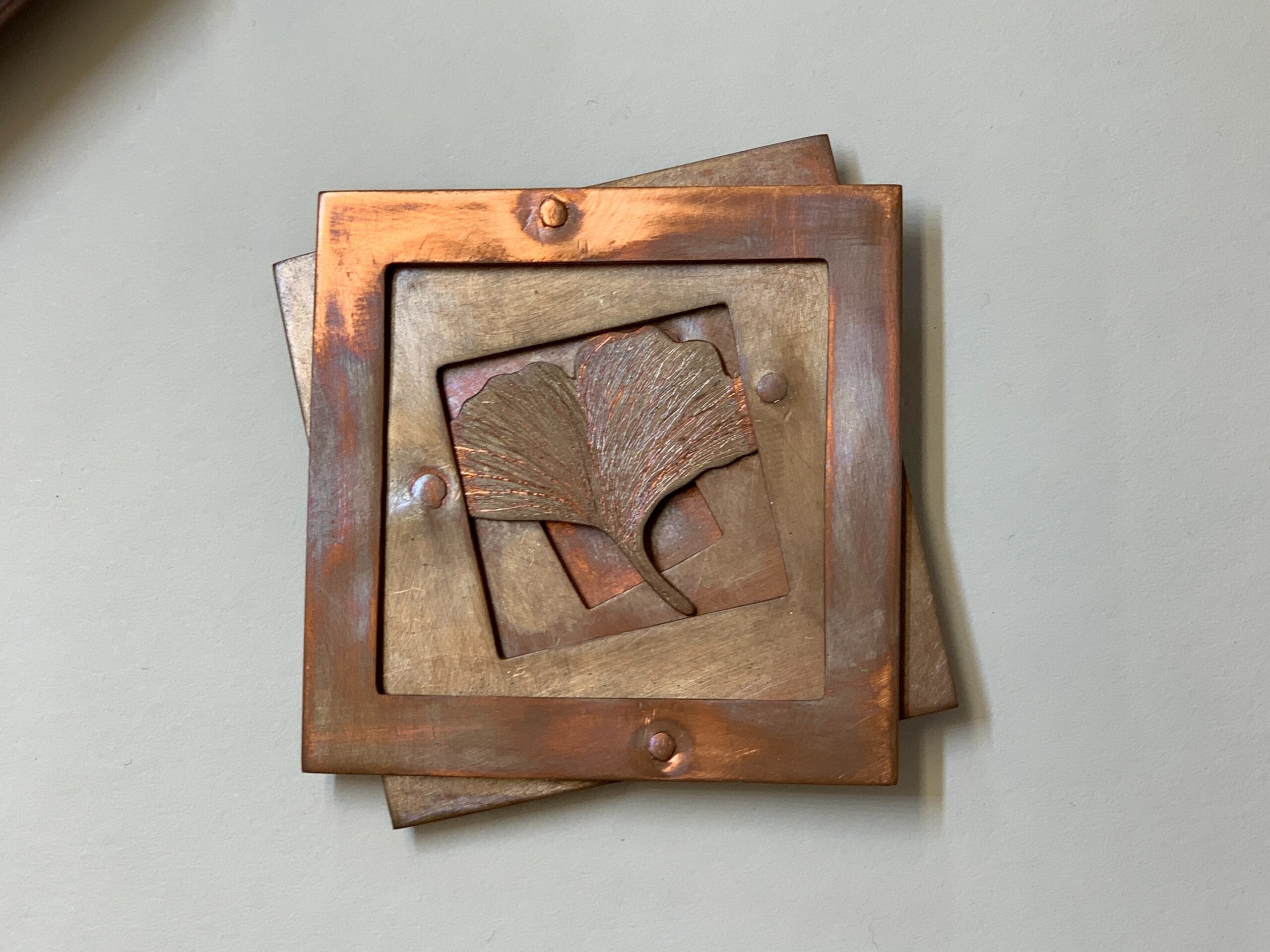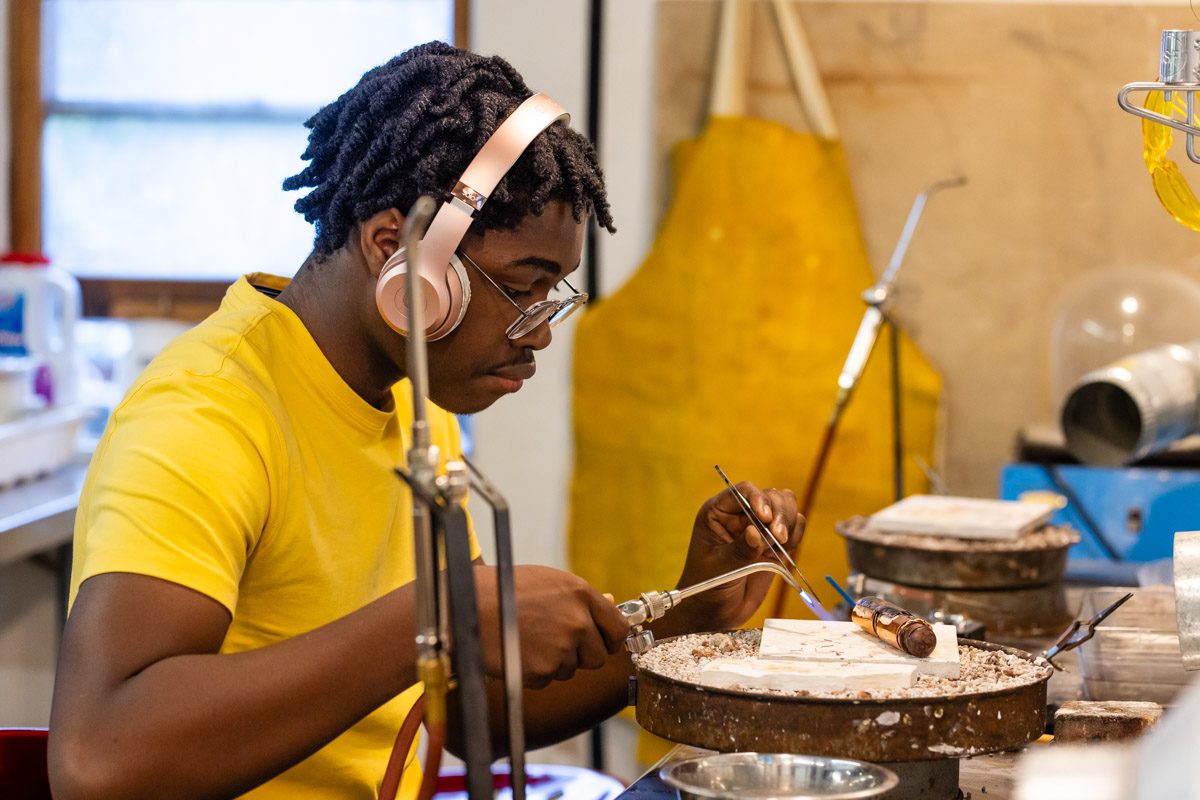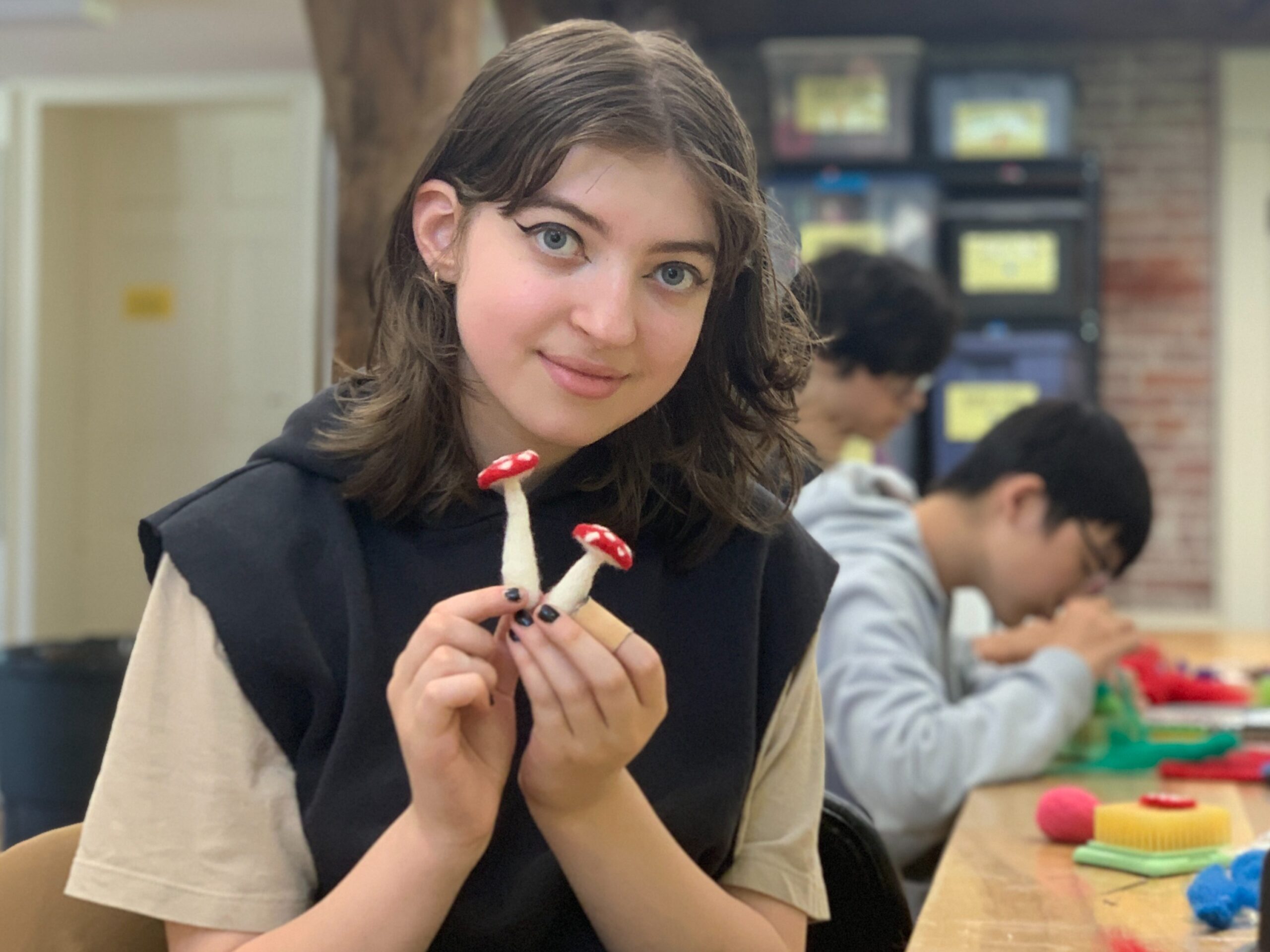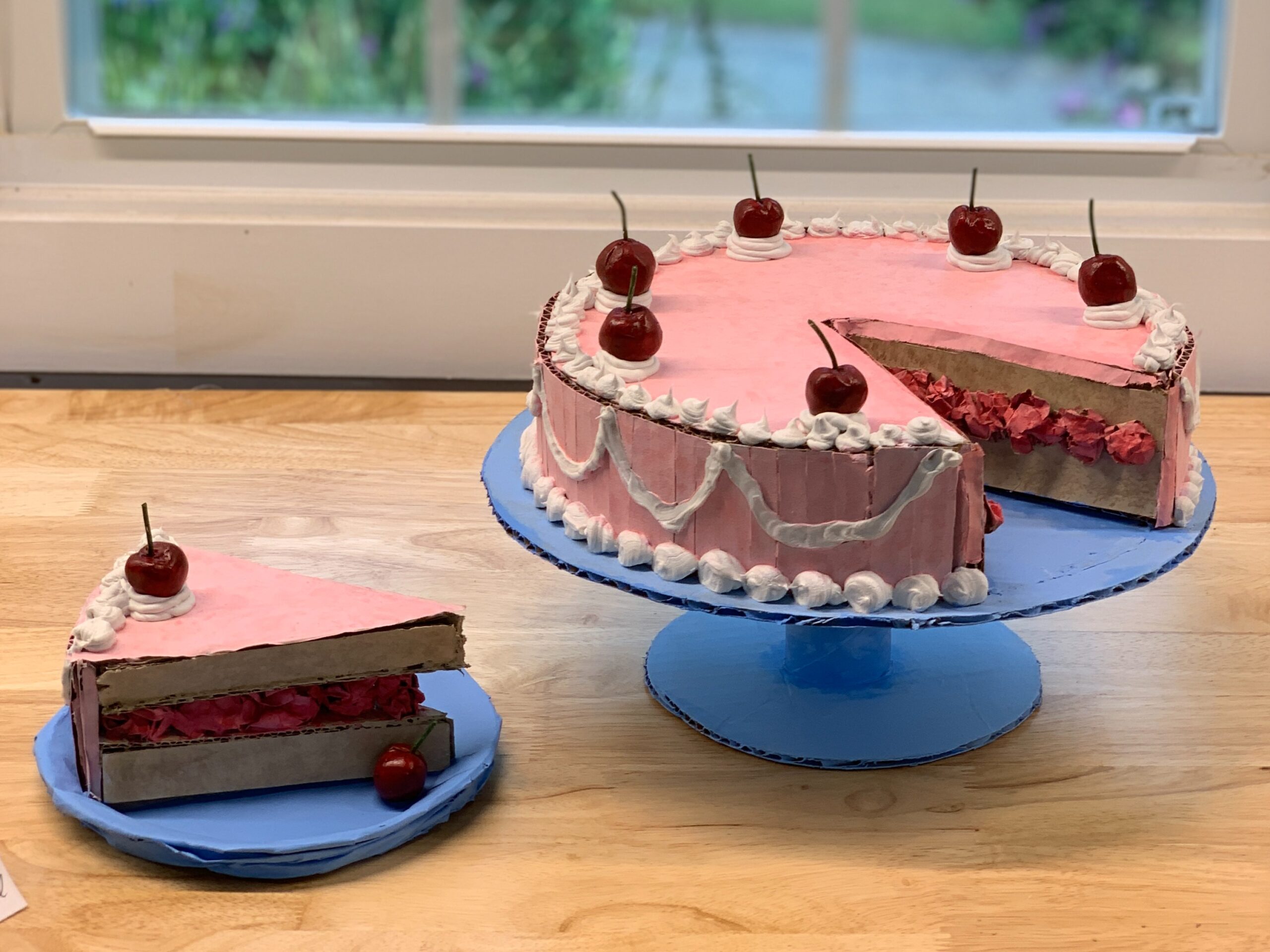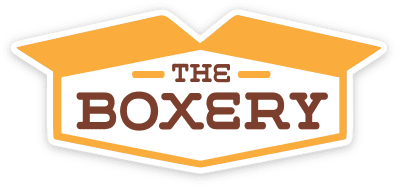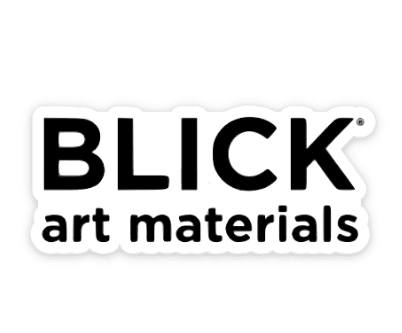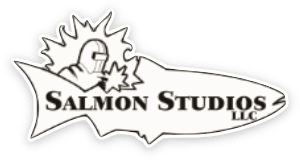The heart of the Snow Farm Summer program are the studio classes in ceramics, drawing & painting, flameworking, flat glass, metalsmithing & jewelry, and multi-media sculpture. Students enroll in two studios during a session; one class meets every morning and the second one meets in the afternoons. Students return to the studios for another four hours of supervised open studio time in the evenings. Browse the studios below to learn more about the curriculum and equipment in each one.
Ceramics
Students in the ceramics studio experience every aspect of what it’s like to be a working ceramic artist: claymaking, different glaze processes, and loading and firing kilns. Students explore both wheel throwing and handbuilding and a wide range of surface techniques.
Curriculum
The curriculum is based on developing mastery in wheel throwing, hand building, and surface design. Students at all levels of experience can be accomodated in our small classes. Lessons may include using slip and underglaze for imagery, carving, slip casting and the use of molds. Unlike most high school ceramics classes, Snow Farm offers access to a variety of different firing methods: a Bailey gas reduction kiln, a raku kiln, pit and smoke firing, and 2 large electric kilns. Projects include functional pottery and experimental sculpture using traditional and contemporary forms. In a class of no more than 8 people, and 3 – 5 hours of work time a day, young ceramic artists build confidence and skills along with their clay creations.
Equipment
The ceramics studio encompasses inside and outside space, with plenty of room for the small class to spread out. The studio was fully renovated in 2019 with new windows, tables, glaze area and more. For more pictures and details, see the main ceramics studio page.
Drawing & Painting
For students working on a portfolio for art school applications or those who simply love to draw and doodle, the drawing and painting studio is a foundational class in line, tone, composition, and color. Bring a sketch book and your imagination and be inspired by the beautiful New England landscape.
Curriculum
The curriculum includes both traditional and contemporary techniques and will develop confidence with a wide variety of materials and tools. Students will study the human figure, and with parental permission, have the opportunity to draw from a live model. Forms in nature, landscapes, still life, and abstraction may also be among the lessons and exercises. As much as possible, the class is influenced by the ability and interests of members of the class. A maximum of 8 students allows for individual critique and feedback on a daily basis. The session ends with a final project and student exhibit for all studios.
Equipment
The 2D studio is spacious and filled with natural light. In addition, direct lighting options are available when necessary. There are large work tables, easels, masonite drawing boards, and a drying rack. Students will be provided with a full range of drawing, painting, and mixed media supplies, papers, tools, and supports. For more details and images, see the main page for the 2D Mixed Media studio.
Flameworking
Snow Farm Summer is one of the few places that offers a serious studio experience in glass for high school students. In flameworking, also known as lampworking and torchworking, solid rods and tubes of glass are melted using a table-top torch that can get as hot as 5000 degrees F.
Curriculum
Students will learn safe operation of the torch, kilns, and tools made of graphite, brass, or steel. Lessons will include melting, shaping, sculpting, and decorating the glass. Projects may include beads, marbles, pendants, small vessels, and intricate sculpture. Students will work in both borosillicate and soda lime glass. Flameworking is surprisingly accessible, while at the same time offering a world of possibility for each artist’s personal touch.
Equipment
Ten torches are situated along the outer edge of a large communal table. The instructor is able to move freely and quickly around the table to answer questions and offer continuous feedback and instruction. The studio runs on tanked oxygen and propane. A full assortment of soft and borosillicate glass, both clear and colored, is available for student use. Equipment includes: 10 Nortel Minor burners, six annealers various sizes and styles including a Paragon Guillotine and XL, a 10-inch wet lap wheel, and a commercial murrini saw. Dydium glasses and all necessary hand tools are available to students in individual tool kits in the studio. For more pictures, see the main flameworking studio page.
Flat Glass
Students in the Flat Glass studio learn a variety of techniques for working with flat sheets of glass to make decorative panels and sculpture or functional pieces such as bowls, trays, frames, and more. Glass can be fused in a kiln, soldered together in stained glass, cut and assembled for mosaics; it can be worked thin and transparent, thick and painterly, be whimsical, realistic, or abstract. Imagery can be applied to glass by paintng, etching, or using decals. After becoming familiar with the many techniques, they can be combined into complex and imaginative artwork.
Curriculum
A variety of kiln glass techniques will be introduced, such as how to cut glass safely; how to fuse glass in different ways (slump, tack, and full); how to apply surface decoration with paint, frit, or decals; how to solder; or methods for assembling mosaics. Students will concentrate in an area of interest and develop a individual project. Instruction will include design, use of color, and personal expression.
Equipment
The Flat Glass glass studio was renovated in 2018. The space is large, airy, and light with a view over the meadow towards the 2D & 3D studios. Custom-made tables on locking caster wheels allow for flexible configurations. To see pictures and a full listing of equipment, see the main flat glass studio page.
Metalsmithing & Jewelry
From necklaces to spoons,boxes, rings, and small sculpture, students in metalsmithing use silver, brass, and copper to make jewelry and functional or decorative metal objects.
Curriculum
Students will learn the foundations of fabrication and joining methods including various types of soldering and cold connections such as rivets, hinges, tab constructions, and more. Students will explore inlay, stone setting in bezels, forging, and other decorative techniques such as roller printing, coloration of surface, and stamping. Instructors will guide students in designing individual projects based on expressive intentions and personal meaning.
Equipment
The metalsmithing studio is fully outfitted for professional productivity. At a large central worktable, each student has their own bench pin with direct lighting and a storage drawer. A second large table gives the instructor space for demonstrating while all students have a clear view. There are 4 soldering stations, 2 flex shafts, a pickling area, and a full polishing and buffing area. Other equipment includes a shear, 3 enamel kilns, a forming anvil, a mold and vacuum forming table, and a full array of hand tools. For more details and images, see the main page for the metalsmithing studio.
Multi-Media Sculpture
Starting with basic sculpture technique and mold-making, students will learn skills that are both ancient and contemporary. From human figures to mythical creatures and abstract forms, student projects have no limit.
Curriculum
Students will complete three dimensional projects using a variety of sculpting materials. Using a combination of, but not limited to cardboard and paper maché, polymer clay, needle felting, and basic casting techniques, students will begin to understand the process involved in creating a sculpture, explore and begin to understand materiality, and learn to think in an interdisciplinary mindset. We encourage exploration of materials and use of materials in non-traditional manners. Students will be guided through an introduction to each material, and will pursue their own material interests throughout the later portion of each session for the creation of a final project.
In addition to hands-on exploration with materials, students will be exposed to a wide variety of historical and contemporary references to begin building their own library of references they can take inspiration from. We will discuss and employ concept in relation to process, and learn how to observe sculpture from a variety of artistic lenses.
Equipment
The multi-media sculpture class is located in the 3D Mixed Media studio, a spacious and sunny space where students can spread out in three work areas. For a full description, see the main page for the 3D Mixed Media studio.
